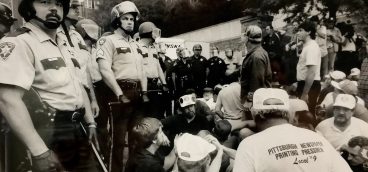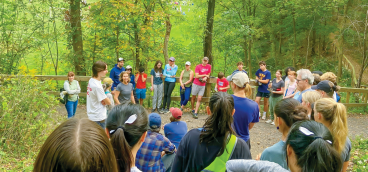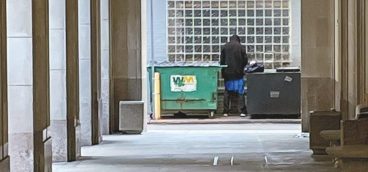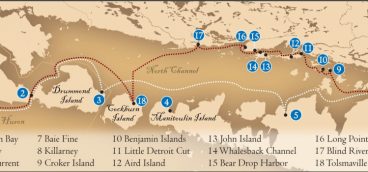An Opportunity for Each of Us
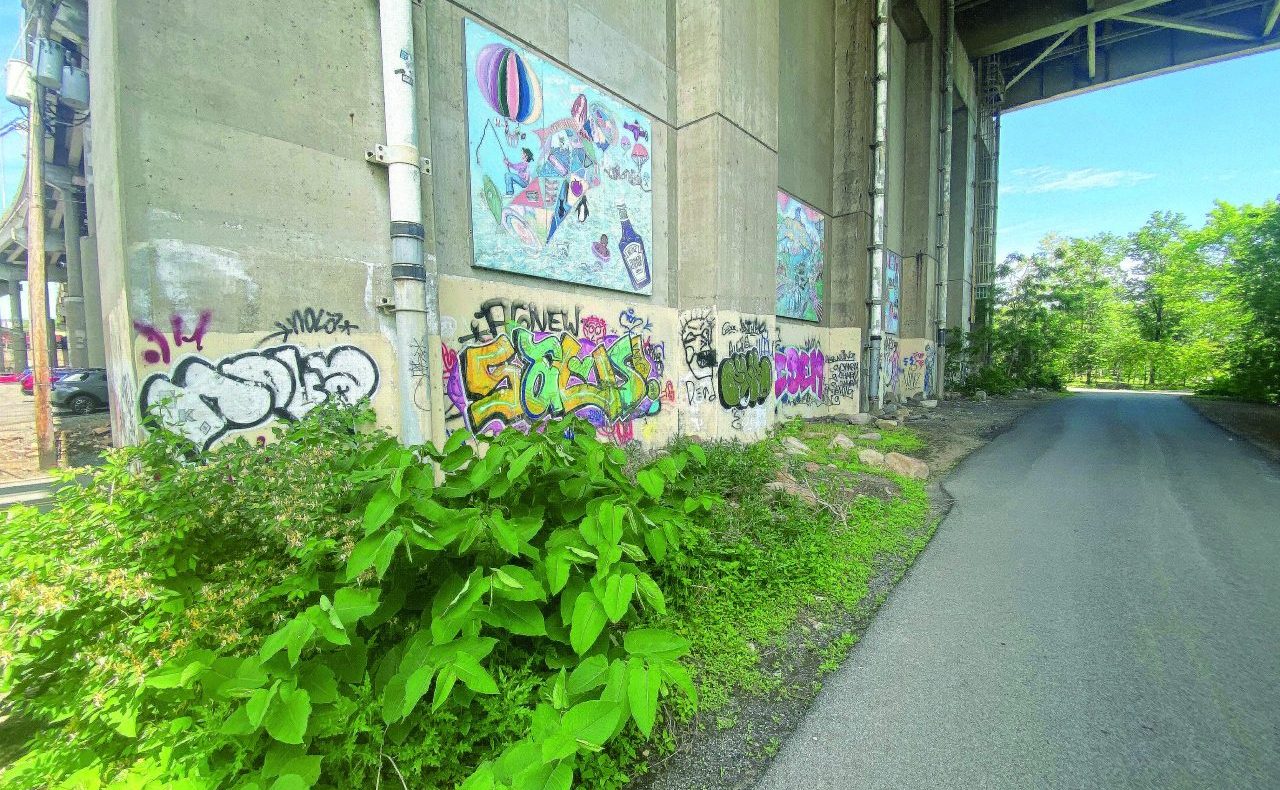
It’s been 23 years since the saga of the discarded toilet.
I lived in Squirrel Hill then, and each day as I drove Downtown to work at the Post-Gazette, I followed the same path as thousands of other motorists, coming through Oakland, exiting the Boulevard of the Allies down and to the right via a ramp connecting to the parkway Downtown.
Just at the merger of that ramp and the parkway, where traffic slows, there sat a discarded toilet in plain view. You couldn’t miss it.
I don’t know when I first noticed it, but once I did, the annoyance and indignity of starting every morning passing a discarded toilet grew in my mind until it became an unwelcome metaphor. I wondered what it said about my adopted city that a toilet sat there day after day, month after month, and maybe even year after year. Was the history of environmental degradation of Pittsburgh so great that citizens had simply become inured to driving past a toilet every day?
At the time, I asked myself, “Why doesn’t somebody do something about it? Whose job is it?”
***
That toilet returned to mind after many years during a May 9 meeting about preparing for next April’s NFL Draft in Pittsburgh. Organized by Chuck Stout, chair of the Eden Hall Foundation and Jerad Bachar, President and CEO of VisitPittsburgh, the meeting was attended by the City of Pittsburgh, Allegheny County, Pittsburgh Steelers, Pittsburgh Downtown Partnership, Allegheny Conference on Community Development, PennDOT, Western Pennsylvania Conservancy, Pittsburgh Parks Conservancy, Allegheny Cleanways, and Pittsburgh Tomorrow.
Bachar reported that draft activities are expected to take place near the stadium on the North Shore and at Point State Park. Almost unbelievably, it’s expected to attract some 600,000 visitors and tens of millions of viewers worldwide. The meeting focused on cleaning up and beautifying Pittsburgh and preparing for this huge opportunity.
Caily Grube, head of Allegheny Cleanways, gave an excellent, if somewhat confounding, report on our current state of what I might term our “unpreparedness” vis-à-vis roadside garbage and illegal dumping. She mapped our major highways plus Carson Street, Liberty Avenue and Bigelow Boulevard, classifying all as either “High” or “Moderate” litter and dumping areas. She noted which roads are state-, county- and city-maintained and detailed the various Adopt-A-Highway programs that exist to regularly clean these thoroughfares.
The confounding part was how woefully undersubscribed these programs are, and when Grube mentioned that it would only cost about $300,000 a year to sponsor all of these highways, I was so dumbfounded at how little it would take to make such a big difference here that I audibly muttered: “Wow, that’s not much at all!” She heard me and agreed. Especially in a region with enormous civic wealth, it’s astounding that we let such an opportunity go by — year after year.
***
I attended that meeting because one of Pittsburgh Tomorrow’s projects — the Pittsburgh Tomorrow Leadership Corps — is positioned to play a key role in preparing for the Draft and, I believe, giving the rest of this country an exciting new image of Pittsburgh.
When it was my turn, I explained to the group that we started Pittsburgh Tomorrow to turn around this region’s population losses and reinvigorate its civic spirit and economy. We have tremendous strengths here, but we lead all 387 U.S. metro areas in natural population loss — more deaths than births. The second and third worst regions are in Florida and much better off than Pittsburgh.
We need people more than any region in the country, and there are just two ways to get them. One is by having more births than deaths. And the other is by having more people move into the region than leave it. Given that we lead the nation in natural population loss, our situation is simple and stark: we must be a place people want to stay, and we must attract others to move here.
Pittsburgh Tomorrow has several programs targeting those facts, but one specifically is focusing on the Draft opportunity: The Pittsburgh Tomorrow Leadership Corps.
It’s based on a premise that high school students want to make the world a better place, but that we ask nothing of them. The strategy is threefold. One: Get high schoolers involved in projects that actually clean up and beautify this region — which needs it.
Two: Be part of a long-term population retention strategy by getting these young people actively engaged in their own region’s future: “I planted that tree — this is my home.” Three: Use this program and the fact that nothing like it exists in the country to get national media attention and change Pittsburgh’s image from old and rustbelt to young and green.
Last fall, we launched a pilot project to test our hypotheses. And it worked. Some 300 students from 15 high schools worked on community-based conservation projects across the county. It confirmed two key theses: Students do want to be involved in improving their hometown, and they like connecting with students from other schools.
So this fall and the next school year, we’re expanding the program. We’re inviting students from every high school in the region to join the Corps and play a key role in the NFL Draft preparation. In October, we’ll gather and plant 10,000 bulbs at and near key Draft sites, and these varietals will bloom next April just in time for the visitors. And if we get the state to give us space in Point State Park, we’ll spell WELCOME in flower letters large enough to be seen by the Goodyear Blimp.
Next spring, we’ll work with other regional groups, cleaning up key areas and getting them ready to put Pittsburgh’s best foot forward as the visitors arrive.
These students are going to make a difference in the future of this region. Dressed in special Pittsburgh Tomorrow Leadership Corps shirts and hats, they’ll be the front-and-center focal point of preparation efforts, with news media cameras and reporters telling the story about a new generation of young people who are transforming Pittsburgh into the nation’s garden spot of sustainability and beauty.
So if you know students who want to be part of this effort, please ask them to go to www.pittsburghtomorrow.org/leadership-corps And if you want to volunteer to be part of this effort or if you or your company want to donate and sponsor these activities, please go to the same web page.
***
The 30 or so attendees at the May 9 meeting all were excited about and committed to taking advantage of next year’s great opportunity. I was really impressed.
Blayre Holmes Davis from the Steelers mentioned that she hoped the efforts would last beyond the Draft, and a few nodded their heads. At the risk of overstepping my role in the gathering, I agreed with her and added that I don’t think most people in Pittsburgh understand just how urgent the situation is regarding making this place as attractive as it can be to both those who live here and visitors.
I mentioned to them that not only do we have the highest natural population loss in the country, but there’s another troubling fact that should spur action. Of 16 benchmark regions, the average 10-year job growth is 28.2 percent. Only one of the 16 actually lost jobs and workers over that period — Pittsburgh.
So the Draft can’t be just a one-time, one-off exercise for us — it needs to represent a galvanizing sea change of culture and attitude — on a permanent basis.
Pittsburgh once was a place of great natural beauty, and in many ways it still is. It became the world’s industrial cauldron and a place of such environmental degradation that it gave rise to the environmental movement and the Clean Air Act. Once infamously “Hell with the lid taken off,” we now must become the exact opposite. And this is our chance.
The famous political scientist James Q. Wilson authored the concept of “The Broken Window Theory.” The idea is that visible signs of disorder in a neighborhood, like broken windows or graffiti, can signal a lack of care and encourage further crime and anti-social behavior. Studies show the same about garbage.
We need to become the place where not only is litter not tolerated — it’s prosecuted.
We need mayors and county executives who realize that garbage and blight and, yes, sprawling homeless encampments will be the slow and continuing death of Pittsburgh.
We need leaders across the board who realize that clean natural beauty is an absolute must for us to succeed in marketing Pittsburgh and turning it around.
The people who are in a position to make that happen need to get involved and make it happen. And who are those people? All of us.
In that regard, way back when, as I was wondering whose job it was to get rid of that toilet, I remembered something my high school track coach used to quote: “The helping hand you’re looking for is at the end of your arm.”
And so, one day 23 years ago, when the traffic wasn’t too intense, I pulled my car over on that ramp to the parkway. I walked over to the toilet that had been mocking me every day.
It wasn’t so big after all — just a puny toilet. I lifted it up and propped it into my open trunk. I took it to the dump, and that was that.
Let’s all get involved in the effort to clean up and beautify this region. Let’s believe in our city enough to pitch in, to pick up that piece of trash, and to plant a dozen perennials in some neglected place that needs them. Let’s be proud of our city. So that when our children, and our friends, and others who have never been here come to visit, they’ll say: “Wow, I never realized what a clean and beautiful city Pittsburgh is.”


